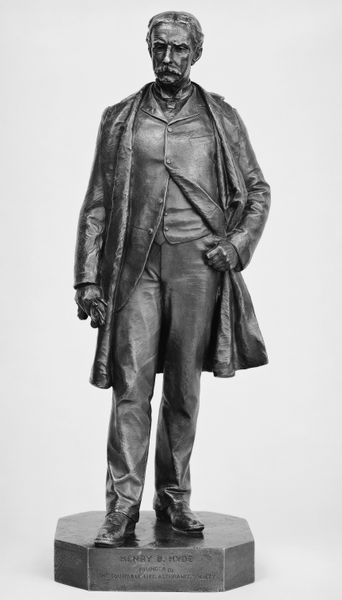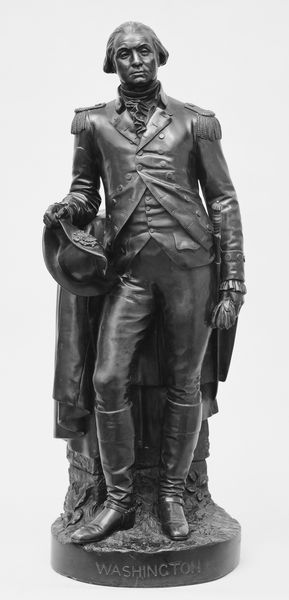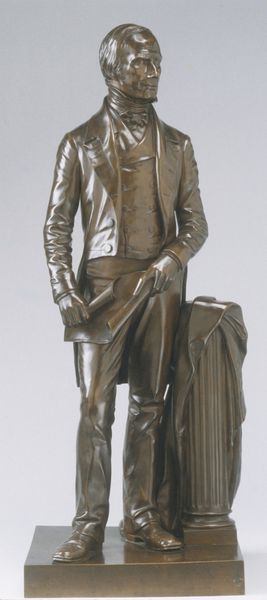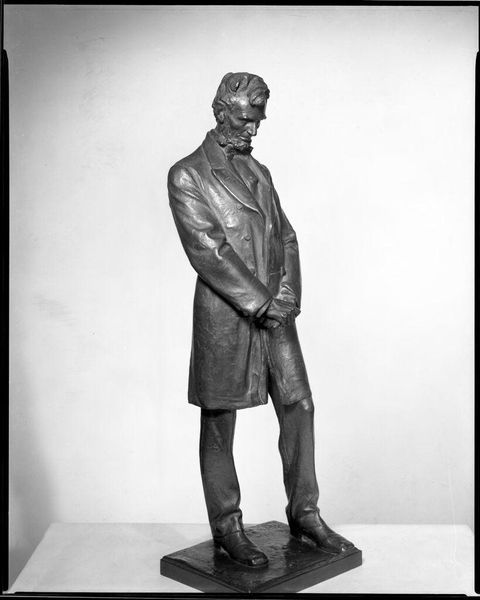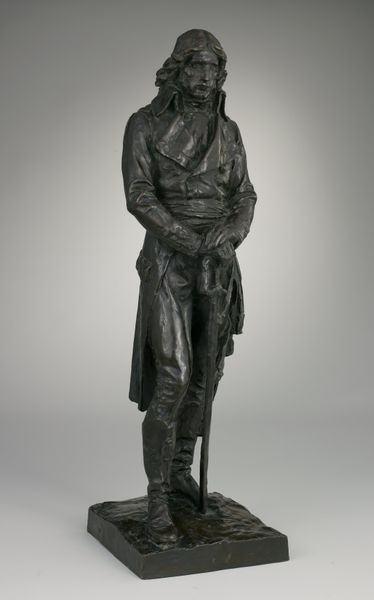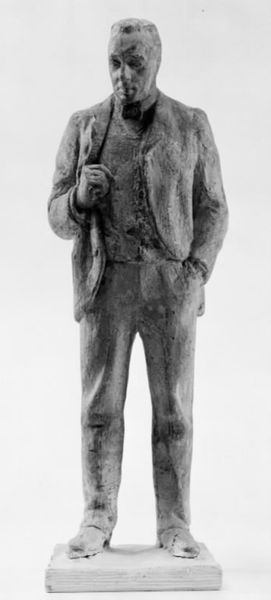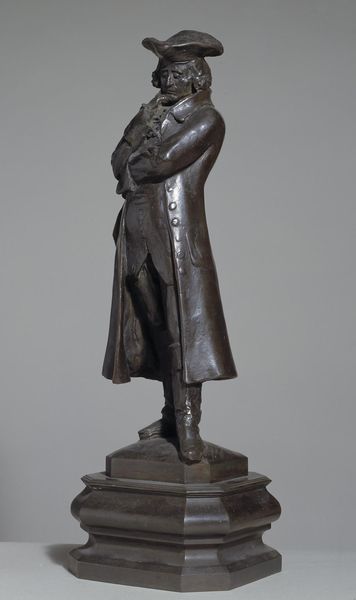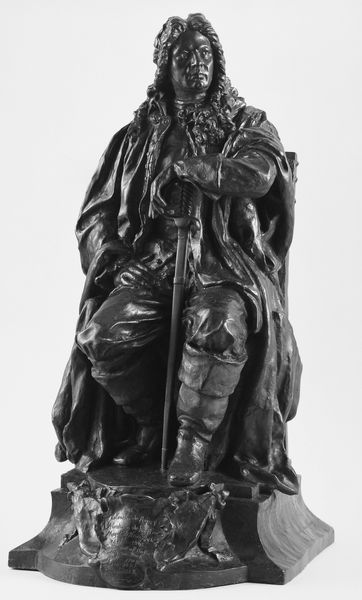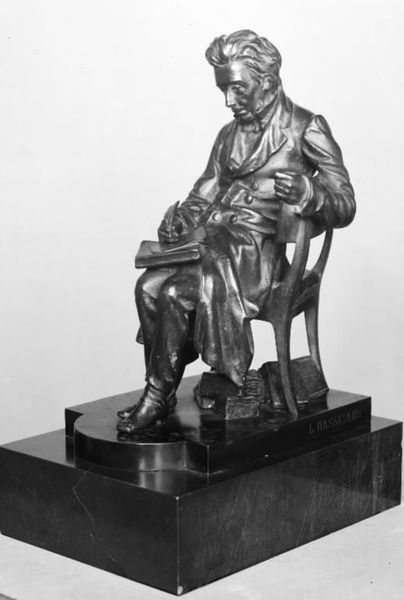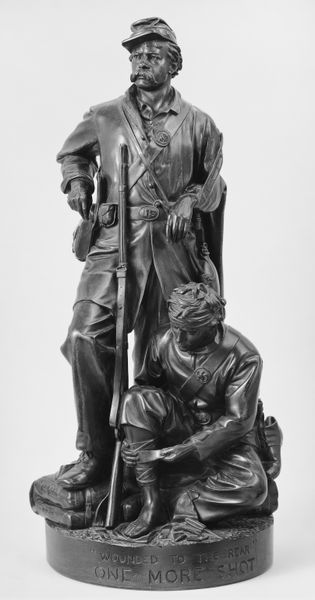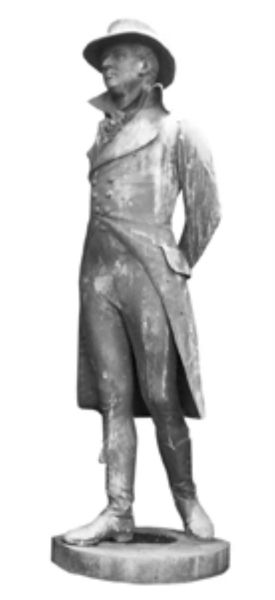
metal, bronze, sculpture
#
portrait
#
neoclacissism
#
metal
#
sculpture
#
bronze
#
sculpture
#
history-painting
#
realism
Dimensions: 29 3/4 x 14 x 11 in. (75.6 x 35.6 x 27.9 cm)
Copyright: Public Domain
Here we see Thomas Ball's bronze sculpture of Daniel Webster, a prominent 19th-century American statesman. Bronze is an alloy of copper and tin that is melted and cast. This process, known as lost-wax casting, is a laborious and time-consuming process. A mold is made, the molten bronze poured in, and then the mold is broken to reveal the sculpture. The surface is then finished, smoothed and burnished, achieving an almost lifelike quality. Bronze allowed for multiples. Ball could make more than one version of this statue for different public locations, increasing his income. The choice of bronze is significant. In the 19th century, bronze was associated with power, permanence, and classical ideals. By casting Webster in bronze, Ball was associating him with the great figures of history, solidifying Webster's legacy. The sculpture's inherent weight and substantial presence further emphasize Webster's importance as a leader. The sculpture thus becomes a powerful symbol of American political ambition. The labor that went into the statue mirrors the subject's professional labor. Looking at material and making enriches our understanding of art, challenging conventional boundaries between art and craft.
Comments
No comments
Be the first to comment and join the conversation on the ultimate creative platform.
